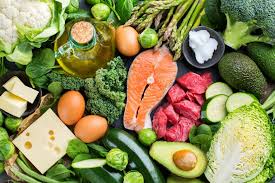Source: health.usnews.com
THE KETOGENIC OR KETO diet has garnered a lot of attention in recent years as a means of quickly losing weight. Some researchers have also posited that it could be helpful in preventing the spread or recurrence of certain types of cancer, and it’s long been a non-pharmacological means of controlling otherwise untreatable epilepsy in some children. But because the diet is strict, it can be challenging to stick with long term. Enter some modifications that help make the diet a little more accessible and sustainable.
What Is a Classic Keto Diet?
But first, a review of what the keto diet is. The classic keto diet leverages the body’s innate ability to burn fat to fuel activity and weight loss by drastically cutting carbohydrates and increasing the ratio of good fats in the diet. The keto diet was initially developed in the 1920s as a means of treating severe epilepsy in children. This classic keto diet is composed of 90% fat, 6% protein and just 4% carbohydrates.
The elimination of nearly all carbohydrates forces the body to use fat as its primary source of energy and mimics the effects of fasting. This biochemical process is called ketosis and occurs when your body breaks down both dietary and stored fat for fuel and creates ketones in the process. Ketones are a byproduct of burning fat that are generated in the liver that can be measured in the blood. If you’re going to be strict about the keto diet, you’ll likely be testing your blood regularly to track the level of ketones to make sure you’re in the target zone for fat burning.
In most people, this switch to nearly-all fat burning results in rapid weight loss. But to stay in this fat-burning zone can be tricky.
Foods that are to be avoided on the keto diet include:
- Legumes, beans and lentils. Though these are good sources of protein and generally considered very healthy food items, they contain too many carbs to conform to the keto diet’s strict limit on carbohydrates.
- Grains, including rice, pasta and oatmeal. Again, there are too many carbs in grains to be keto.
- Low-fat dairy products. The fat content of full-fat dairy makes it useful for keto dieters, but low-fat or skim products don’t contain enough fat to balance out the milk sugars they contain.
- Added sugars and sweeteners.
- Sugary drinks such as juice and soda.
- Snack foods, such as chips, pretzels and potato chips. All contain too many carbohydrates.
- Starchy vegetables, such as potatoes and peas.
- Alcohol. Beer, wine and hard liquor all contain alcohol, which is derived from sugar.
If you’re following a classic keto diet, you should also avoid processed and prepared foods and focus on whole foods. Even packaged foods that are labeled as “keto friendly” can be unhealthy and high in fat and sodium. Although they may conform to the macronutrient ratio targets of the keto diet, consuming these processed foods may push you into a dirty keto diet, which is often considered a less healthy version compared to the classic keto or modified keto diet.
“The ketogenic diet is unique and highly misunderstood,” says Andrew Ossa, a registered dietitian with Providence St. Joseph Medical Center in Apple Valley, California. “The ketogenic diet is not just any low-carb diet,” Ossa says. And for many people, adhering to the classic keto approach is just too difficult. Thus, some people are opting for a modified keto diet, which borrows some of the principles of the ketogenic diet, but makes it somewhat more sustainable and easier to follow.
What Is the Modified Keto Diet?
Liz Weinandy, a registered dietitian with the Ohio State University Wexner Medical Center, says that what some folks are calling the modified keto diet usually clocks in at around “82% fat, 12% protein and 6% carbs. It’s very similar to a classic keto diet,” but it’s slightly less extreme in its reliance on fat as the primary source of calories, and thus, may be marginally easier to stick with.
Still, it’s not strictly speaking an actual ketogenic diet, though it can trigger some similar benefits. Basically, the modified version raises your allowed intake of protein and lowers the fat intake a bit compared to classic keto.
Ossa notes that “what most people are doing is a modified ketogenic or Atkins diet that’s lower in fat and higher in protein.” While it can still be effective for dropping weight, “the ketone production might not be the same.”
Weinandy says that on a modified keto diet, you might start your day with one or two eggs scrambled in butter or coconut oil, and you “might add some whipped cream to that,” but not the sweet kind. Rather, just heavy whipping cream without sugar. “You might also have a small amount of vegetables. Bacon is pretty common in this diet. Bacon doesn’t have a lot of protein – it’s mostly fat. The keto diet calls for saturated fat, which is the kind that raises the bad cholesterol levels.”
Folks on a modified keto diet might also drink tea or coffee, with so-called “bulletproof coffee being a popular option. This coffee includes butter and MCT oil – a supplement often made from coconut or palm kernel oil that contains medium chain triglycerides that are absorbed quickly into the blood stream.
For lunch, “there could be a side salad of leafy greens, some type of sausage, a lot of cheese and full fat dressing that’s low in sugar,” Weinandy says. Dinner would be more of the same – high in fat, low in carbs and moderate levels of protein.
